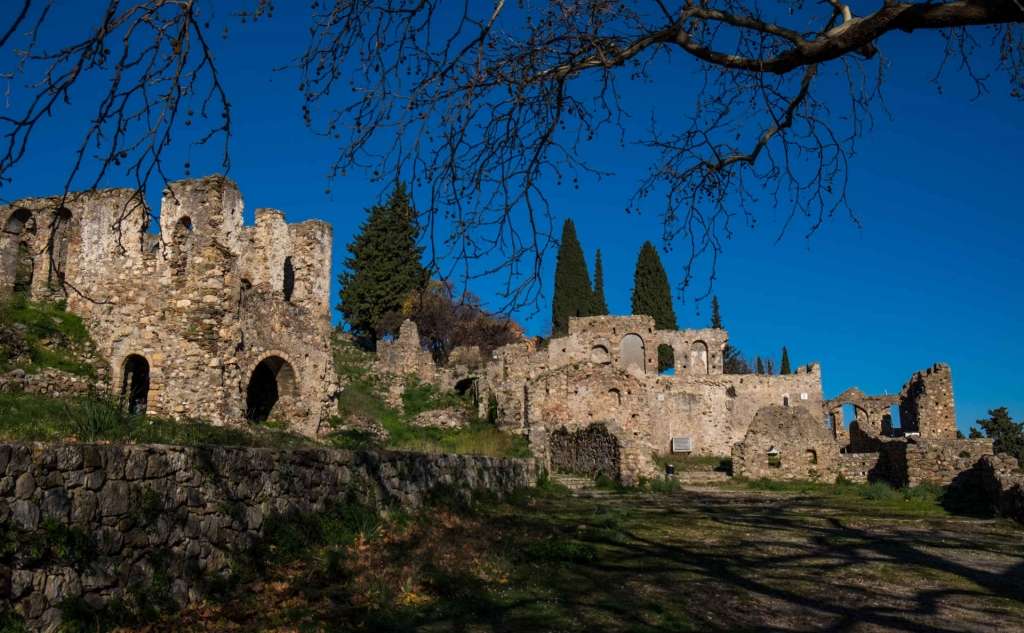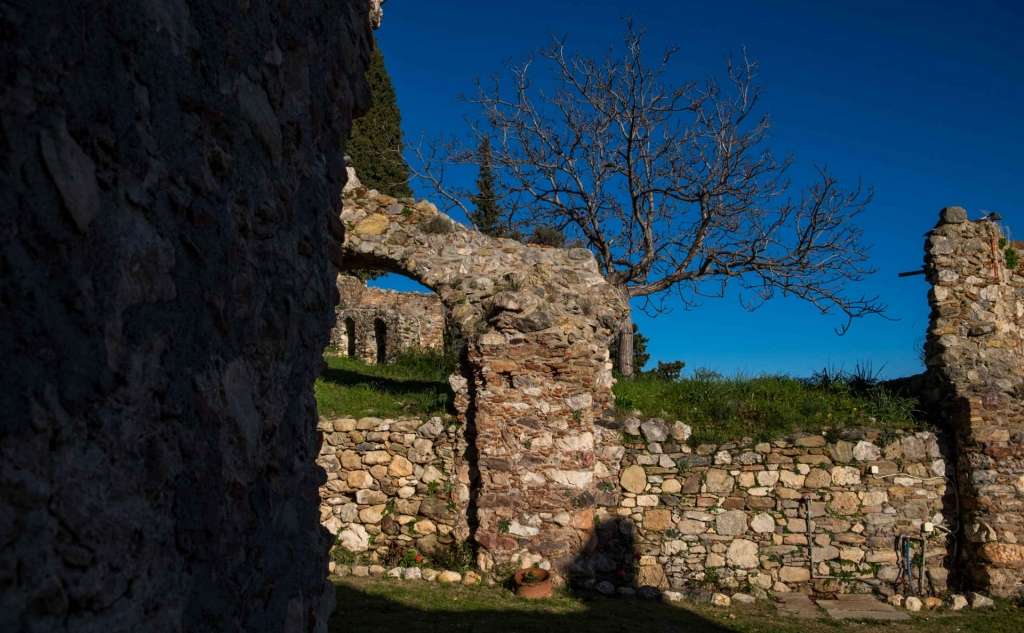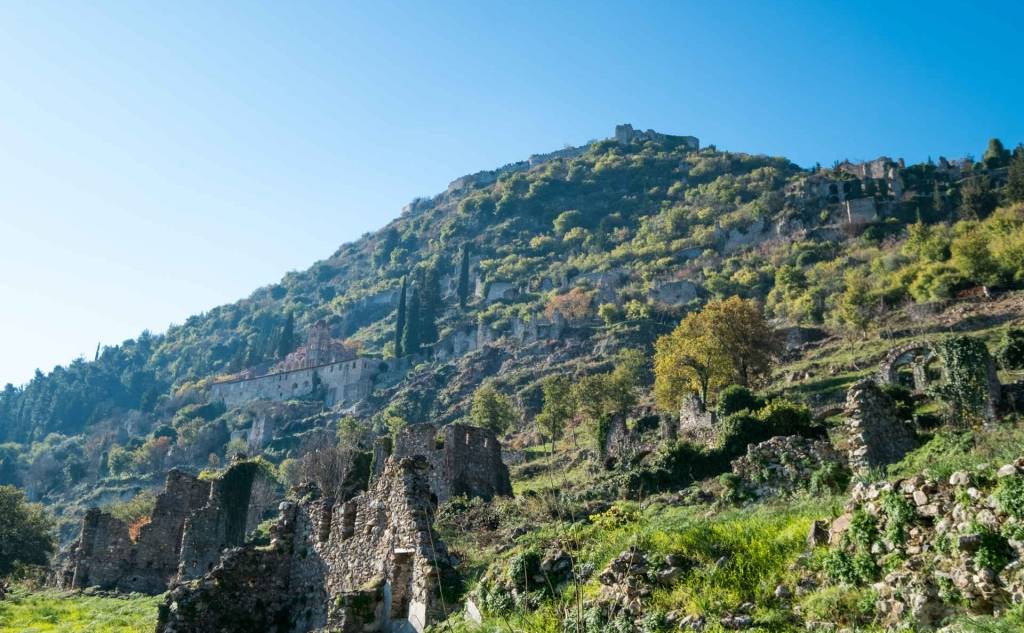Mystras
Mystras, also known as "Myzithras", is located only 5 kilometres away from Sparta, and it is considered one of the best examples of the Byzantine civilisation.
The location north of Mount Taygetos consists of the Medieval castle and the fortified settlement that closes within its walls monasteries, churches, chapels, houses, and palaces.
The name of Mystras or Myzithras existed before the castle's foundation, and it was the name given to the mountain by the local population before 1249. The name is related to the mizithra cheese, while, according to some historians, it is associated with the mountain’s shape. The Frankish Acropolis can be found at the top of the hill, while two fortification enclosures protect the settlement. Mystras is divided into three levels of urban planning: the fortified castle is at the top, followed by the Upper and Lower towns.
The fortification of the mountain and the rise of Mystras to a powerful military, political, spiritual and artistic centre during the Late Byzantine period was associated with the abolition of the Byzantine Empire by the Fourth Crusade in 1204. The castle's foundation in 1249 (by the Franc conqueror William II Villehardouin) marked the establishment of the Franks’ rule in the Peloponnese. In 1259, in the battle of Pelagonia, the Franks were defeated, and after 1262, Mystras became the base of a Byzantine General. The historical period of the place began after that. The inhabitants of the plain started building their houses around the castle in order to protect themselves from the raids.
In 1349 Mystras became the capital of the semi-autonomous Despotate of Moreas, with its first "Despot" being Manuel Kantakouzenos (1349-1380). In 1383, the Kantakouzenos dynasty was succeeded by the imperial family of the Palaiologi, Theodoros I being the first representative (1380/1-1407). The Byzantine phase in the history of Mystras ended in 1460 with its surrender to the Turks. From 1460 to 1540, Mystras becomes one of the most important silk production and trading centres of the eastern Mediterranean. The decline of Mystras began in 1770 after its destruction by the Turkish troops. The area remained inhabited throughout the Ottoman period. With the founding of the modern town of Sparta by king Otto in 1834, the movement of Mystras’ residents to the new city of Sparta began about 8 kilometres to the east. The last inhabitants abandoned the place in 1953, while in 1921, by royal decree, Mystras was declared a Byzantine monument. In 1989, Mystras officially became a UNESCO World Heritage Site.
Mystras is famous for the Post - Byzantine churches scattered in the archaeological site.
The visitor may see seven churches, all of which were study places of Byzantine architecture, painting and hagiography. Many of the churches owe their present form to conservation work done by Anastasios Orlandos shortly before 1940.







